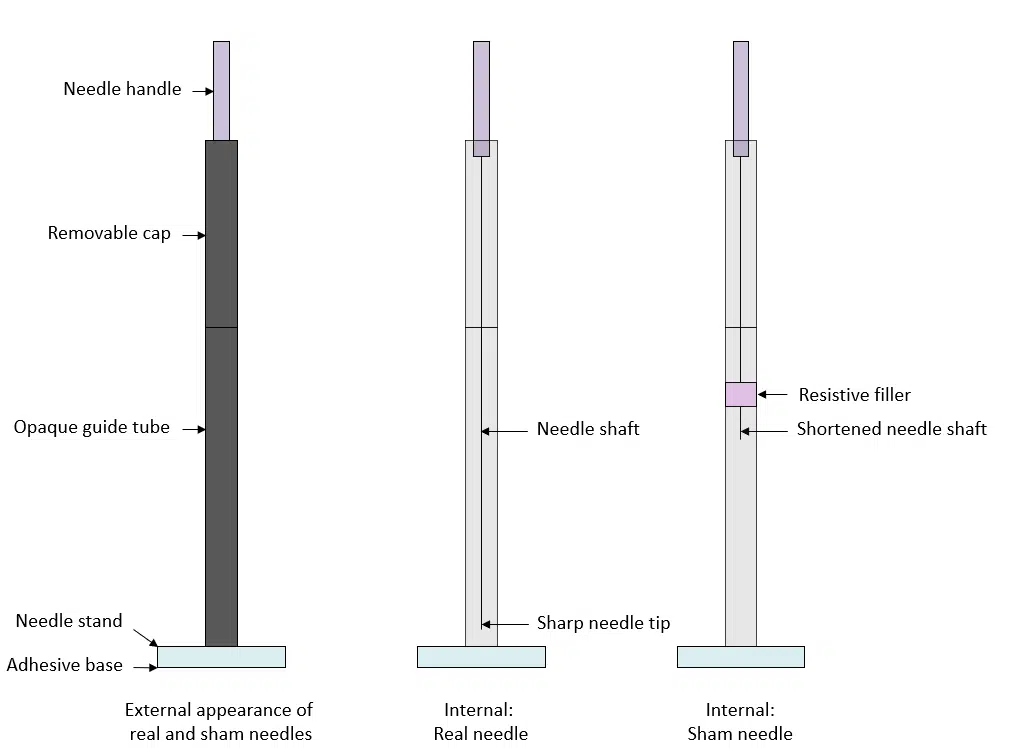Researchers harness the conjuror’s art of deception to make fake needles seem real.
Placebos are fake treatments that are crucial in clinical trials to test if a treatment actually works or whether benefits are merely due to receiving an apparently credible treatment from a trusted clinician. But placebos only work if the patient and clinician are not aware that it is fake.
But in the case of dry needling for pain management – a practice similar to acupunture –studies to evaluate the technique have failed because there was no convincing placebo.
Until now, the clinician, the patient, or both have been aware if the needle is real or fake.
So researchers from University of South Australia developed a placebo to test the effectiveness of dry needling.

Using magicians’s tricks, Felicity Braithwaite, a postdoctoral fellow, has invented a world-first placebo that gives the illusion of inserting a real needle into the skin for both clinician and patient.
The needle actually disappears into a false base, never reaching the skin.
“My placebo uses many magical techniques,” Felicity says.
“The false base is made from stiff foam, which makes clinicians feel like they have pierced the patient’s skin.
“For the patients, I use misdirection – the clinicians asked questions when needles were being ‘inserted’ to distract patients, and I manipulate patients’ expectations of what dry needling ‘should’ feel like, suggesting that it is normal to feel nothing at all as the needles are so thin.”
When patients and clinicians were asked to guess whether what they had experienced a real or a fake needle their success rate was no better than a random chance
“That means they had no idea,” says Felicity. “My placebo was the first to successfully trick patients and clinicians and therefore we can better assess whether dry needling is actually effective in managing pain.”
Felicity says that magicians could teach researchers a lot about enhancing the illusion of treatments when people receive placebos in other applications.
“These novel deceptive techniques could be used to create better placebos for other complex treatments– a vital step towards improving the quality of healthcare,” she says.





 Fresh Science is on hold for 2022. We will be back in 2023.
Fresh Science is on hold for 2022. We will be back in 2023.